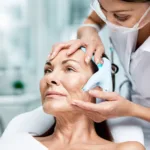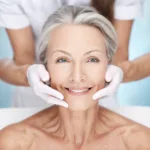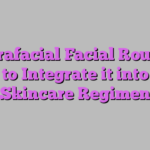3 January 2024
A comprehensive analysis of the HydraFacial treatment and its effectiveness in improving skin texture, treating acne, reducing signs of aging, and more.
In the quest for flawless skin, many individuals turn to professional treatments like the HydraFacial. This patented skin treatment, also known as “hydradermabrasion,” offers a three-step process that promises to deep-clean, exfoliate, and hydrate the skin. With claims of improving overall skin texture, treating acne, reducing blackheads, and addressing anti-aging concerns, the HydraFacial has gained significant popularity. But does it really live up to the hype? In this article, we delve into the potential benefits, possible side effects, and how it compares to similar treatments.
HydraFacial Benefits:
The HydraFacial is renowned for its ability to improve skin texture, tone, and appearance. Through its deep exfoliation process, it effectively cleanses pores, removes debris, and allows for better penetration of customized face serums. While there are no clinical studies specifically highlighting the benefits of HydraFacial for acne, similar microdermabrasion techniques have been considered effective for treating acne and acne scars. The deep exfoliation in HydraFacial can help remove pore-clogging skin cells, making it potentially beneficial for blackheads as well. Although more research is needed, early studies suggest that HydraFacial may benefit individuals with rosacea and show promising results in addressing anti-aging concerns, such as decreased pore size, less hyperpigmentation, and decreased fine lines.
HydraFacial Side Effects and Precautions:
While the HydraFacial is generally considered safe and free of complications, some individuals may experience light pressure during the procedure. Unlike other cosmetic treatments, the HydraFacial is not supposed to cause pain or redness. However, individuals with an active rash, such as one related to a rosacea flare, should avoid this procedure. Pregnant individuals should consult their doctors before undergoing any aesthetic procedures, including the HydraFacial, as there is a lack of clinical studies confirming its safety during pregnancy. While a HydraFacial is designed to address excess sebum and dead skin cells that can lead to breakouts, it’s essential to inform your provider of any allergies or extremely sensitive skin to avoid potential breakouts after the treatment.
How Does HydraFacial Treatment Work?
Performed by licensed aestheticians or dermatologists, a HydraFacial involves a three-part process. First, a vortex-like wand is used to clear away dirt and oil from deep within the pores. Then, a peel is applied to exfoliate and resurface the skin. Next, a vacuum-like attachment extracts debris from the pores. Finally, a pen-like attachment applies a moisturizing serum with antioxidants. Additional skin care treatments, such as dermal fillers or light therapy, can be added but are not included as part of the HydraFacial treatment.
HydraFacial Before and After:
After a HydraFacial, individuals may notice smoother, more radiant skin with a potentially more even skin tone. The results are said to be immediately noticeable without any visible signs of irritation.
HydraFacial Aftercare and Frequency:
HydraFacial sessions typically take less than an hour, and no downtime is required. While there shouldn’t be any redness or peeling after the session, it’s advisable to avoid exfoliating treatments for the first couple of days. The frequency of HydraFacial sessions depends on the individual’s skin type and the provider’s recommendations. Some suggest repeating the treatment every 4 weeks, while others recommend sessions every 2 weeks. Consulting with an aesthetician or dermatologist can help determine the appropriate number of sessions based on individual skin conditions and goals.
HydraFacial Costs and Comparisons:
HydraFacials are priced higher than typical facials, with an average cost of $175 per session. Additional add-ons or booster treatments increase the overall cost. While the HydraFacial may be slightly less expensive than monthly facials combined with microdermabrasion or chemical peels, it is still considered a cosmetic procedure not covered by insurance. Comparatively, microdermabrasion is another exfoliation treatment that targets fine lines, wrinkles, age spots, and acne scars but does not involve serums. Dermalinfusion, similar to HydraFacial, offers 3-in-1 procedures but may cause some redness and irritation afterward. Radiofrequency therapy, on the other hand, promotes tighter, smoother skin through heat energy but does not involve exfoliation or serums and may cause redness after each session.
Conclusion:
The HydraFacial treatment offers a promising solution for individuals seeking improved skin texture, acne treatment, blackhead reduction, and anti-aging benefits. While clinical studies supporting its specific benefits are limited, the deep exfoliation and customized serums make it a potentially effective treatment. As with any cosmetic procedure, it’s crucial to consider individual skin conditions, consult with professionals, and weigh the cost against desired outcomes. Ultimately, the decision to undergo a HydraFacial lies in the hands of the individual seeking a rejuvenated and refreshed complexion.



